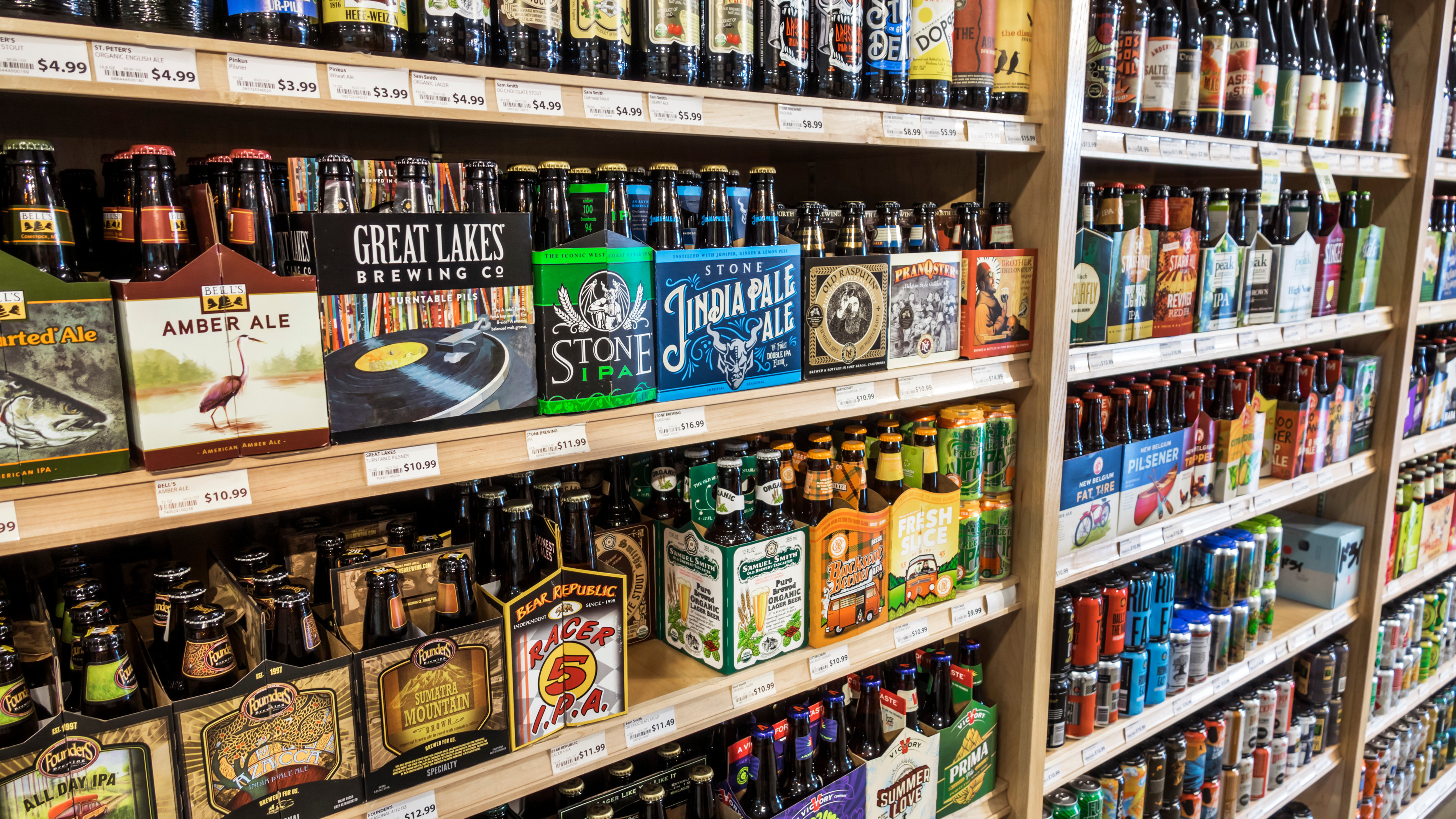There Is An Objectively Perfect Package For Every Style Of Beer
If your roommate texts you "Hey, pick up some beer on your way home, please," what do you picture? Most likely you envision a six-pack, but does it contain cans or bottles? Or maybe it's a Friday, and a 30-pack to get you and friends through the weekend is more your speed. Or maybe you're looking for a cork-and-cage specialty bottle that you two can share over dinner.

An explosion in the number of American breweries translates not just to diversity in styles of beers but also variety in the vessels they're sold in. Grocery stores now stock six-packs, 15-packs, 30-packs, individual 19.2 extra-tallboy cans, 16-ounce cans, and more. Breweries have found that a four-pack of 16-ounce cans—preferably with vinyl labels—is the new way to communicate their cachet to IPA drinkers. And just this week, I received my first-ever lager packaged in an 8-ounce can, from Chicago's Hopewell Brewing Co. (see right).
In these rich times, which beers fit best in which package is far from settled—until now. Behold, readers, my objectively, 100% inarguably correct guide to which beers should be sold in which packages. I expect to see zero comments on this article, as obviously there is nothing left to debate.
American lager: 15 packs of 12-oz. cans
The "30-rack" is the Tetris block upon which so many a college party is built, but among real adults, the 15-pack is the optimal package for your highly crushable, low-calorie lagers. Several breweries offer beers in this format, and I find them both more portable than a 30-rack (think backyard grilling, car camping, etc.) and more mathematically sound. A 15-pack gets five people three beers each, or three people five beers each. Depending on the level of party you're going for, allotments are easily calculated.
IPA: Four packs of 16-oz. cans
Begrudgingly, I have to give it to the insufferable beer geeks on this one: The trendiest packaging in IPAs does in fact serve a purpose, even for the non-geeks among us. Despite my seasoned liver, I can feel 16 ounces of a 7% IPA. That's why I generally like to split one with a friend, then open a second and split that as well. It keeps the beer cold and fresh, and helps me pace the rate at which hops and alcohol are flowing through my bloodstream. If there's no friend around to share with, 16 ounces of IPA is still a manageable serving for a single person. Just don't price these four-packs at $25, you monsters.
Barrel-aged or imperial stout: Individual 12-ounce bottles
Remember the tyranny of 22-ounce "bombers" roughly five years ago? Every craft brewery sold their brawniest, most intense beers in them. It worked fine for the .01% of people who regularly participate in beer bottle-share parties, but it discouraged the rest of us from ever opening these behemoths. (Many a beer cellar became a bomber graveyard circa 2013.) Twelve-ounce bottles work way better for these big beers, because two people—heck, one person—can finish one without massive commitment. And if you'd like to share such a special beer with more people, just buy two or three bottles. But putting imperial stouts in a six-pack usually turns them into quite a financial investment, especially if it's a beer you're unsure you'll like.
Amber ale: Six-packs of 12-oz. bottles
The everyman's beer style belongs in the everyman's beer package. I know, cans are preferable to bottles, but there's just something right about amber ales in bottles. I can't logically explain.
Saison: 375mL or 750 mL corked bottles
One case for the large, bomber-sized bottles: Saisons. Belgian-style beers that have been bottle-conditioned (meaning they're still undergoing some small amount of fermentation in the bottle), don't require the cork-and-caged set-up anymore, but it sure looks nice. It's true to how the Belgians do it, which is part of the appeal of drinking saison, I think. I've seen a few breweries introduce smaller versions of these, which—to borrow a technical beer-writing term—are freaking adorable.
Porter and stout: Four-packs of 16-oz. cans
Porters and stouts do well in slightly taller packages, I think, because you can pour a small taste for a friend or glug a bit into a chili recipe and still have your full 12-ounce beer left. Many standard porters and stouts are actually less alcoholic and thick than drinkers might expect, meaning you can get through a 16-ounce can in a reasonable amount of time. I don't see many stouts and porters packaged this way—six-packs still dominate—but I'd like to.
Kölsch: 30-packs of 8-oz. cans
Alright, if porters in tallboy four-packs was a dream, my ideal kölsch package is a wishful hallucination. No brewery makes such a thing, but hear me out: 30 kölsches in the tiny cans pictured above would be heavenly. In Cologne, Germany, the birthplace of kölsch, these beers are sometimes served in tall, thin glasses that are endlessly replaced for you—like a Brazilian steakhouse model—until you tell the bartender to stop. It keeps the beer properly cold and fresh, whereas a pint might warm up a bit before you could finish it. Genius, I say. And since I would drink kölsch nearly all day if it was an option, I together with a few friends could easily breeze through 240 ounces of it during a backyard party.
